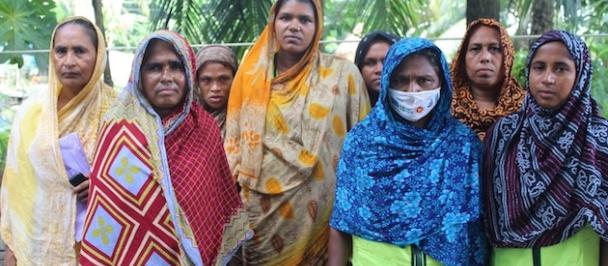By Van Nguyen, Deputy Resident Representative of UNDP Bangladesh
In my quest of exploring all 64 districts of glorious Bangladesh, I excitedly took up our Climate Change Specialist Mamunur Rashid’s proposal to visit UNDP’s past intervention of Sustainable Environment Management Program (SEMP) in Rajshahi district.
SEMP, also known as the Green Vehicle to Promote Bangladesh Environment, was a follow up of the National Environment Management Action Plan (NEMAP), developed in 1995 and remained valid till 2005.
The main objective of NEMAP was to identify key environmental issues, conserve nature, reduce environmental degradation, promote sustainable development and raise the quality of human life. As a part of NEMAP, UNDP along with the then Ministry of Environment and Forest, initiated SEMP in 1998-2002, with five key components, 1. Policy and Institution. 2.Participatory Ecosystem Management, 3. Community-based Environmental Sanitation, 4. Advocacy and Awareness and 5. Training and Education.
During the lifetime of SEMP, significant contributions made by this initiative were environment management, sustainable human development, and a breakthrough in the poverty situation by helping the poor, particularly the women. Now, 18 years later, in 2021, I had a chance to witness what ‘sustainable’ actually means when I visited Godagari upazila of Rajshahi, and truth has to be told, I did feel a bit of butterfly in my stomach as no one would like to have a negative experience, right?
When I arrived at green paddy fields, I met the 65-year-old farmer Nazrul, who works on a plot of land passed down from his father. The family owned this plot since the birth of Bangladesh in 1971. As I spoke to Nazrul I learnt that this region of Rajshahi division faced some of the harsh realities of climate change over the years. In the last two decades, farmers in this region noticed a significant rise in heat waves during summertime and increased desertification and lack of rainfall. All of these led to water scarcity and drought. The adversities of climate change resulted in socioeconomic downfalls because farmers could only cultivate one type of crop once a year. For the rest of the year, the land remained unfertile and dry, leaving farmers with minimum or no income.
Nazrul told me, two decades back, all one could see in the distant horizon was barren sandy parched land. However, standing there in the middle of the paddy field in 2021, all my eyes could see was endless lush green crops swaying from side to side in the rhythm of the wind. I asked him what had changed over the last two decades, to which I learnt a story of sustainable transformation.
 |
 |
Working with the Government, UNDP facilitated the construction of a water irrigation system by redirecting water from the mighty Padma river, which was 3.5 km away from this plot of land. This 29 km water irrigation system also had a water reservoir for the dry summertime; pumps were used to bring the water up and disperse it through valves that were distributed across the entire field. This surface water irrigation system was a nature-based solution meaning it completely avoided groundwater extraction, which has adverse effects on climate change.
When Nazrul opened one of the valves, I looked in awe as the cool fresh water gushed out and flowed through the channels onto the green paddies. I could picture the smiles of the other farmers of Godagari Upazila, who were now able to harvest not one but three types of crops throughout the year. I learnt about how this system initiated massive socioeconomic transformation as there was more room for crop diversification and higher production of vegetable and rice, which meant an increase in profits and earnings of people in the area.
This mechanised water irrigation system had prompted several ‘collateral gains’, as I like to call it. While I eagerly walked around the place, I witnessed the endless economic opportunities it had opened up in the community. A park was recently built around this irrigation dam; tea stalls were operating their business in full throttle, locals had set up fish cultivation on the water reservoir. It was astounding to witness the multiplier effect that one simple irrigation system left on the local economy; the local livelihood opportunities it created, that continue to expand the economic horizon of this area.
Locals told me that this water was not for free, which is maybe why this system has been up and running so smoothly for the last 18 years. The local government institution responsible for this water irrigation system is Borendra Multipurpose Development Authority (BMDA) who has done a phenomenal task in establishing a pre-paid mechanised card system for water distribution. Each farmer is provided with a card that can be topped up and used to pay for the water at machines installed at the site. This monitoring system ensures optimal utilisation of water and creates ownership of the farmers.
The farmers meet once a month with BMDA to discuss, plan, share ideas and opportunities around this irrigation system. It overjoys me to hear Nazrul saying that crop production has tripled since installing this water system, and the economic return has more than doubled.
 |
 |
UNDP’s work with Government has demonstrated such strides of progress that I returned from Rajshahi feeling gratified and hopeful for an even better tomorrow. As an organisation, I hope we continue to do the excellent work that we are doing, thereby contributing towards the Global Goals to bring positive, transformative change in Bangladesh in its journey towards a middle-income country and beyond.

 Locations
Locations


